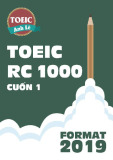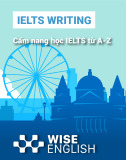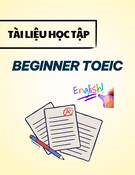
READING PASSAGE 1
Questions 1-13
WILLIAM GILBERT AND MAGNETISM
A. 16th and 17th centuries saw two great pioneers of modern science: Galileo and Gilbert. The impact of their
findings is eminent. Gilbert was the first modern scientist, also the accredited father of the science of electricity
and magnetism, an Englishman of learning and a physician at the court of Elizabeth. Prior to him, all that was
known of electricity and magnetism was what the ancients knew, nothing more than that the : lodestone possessed
magnetic properties and that amber and jet, when rubbed, would attract bits of paper or other substances of small
specific gravity. However, he is less well-known than he deserves.
B. Gilbert’s birth predated Galileo. Born in an eminent local family in Colchester county in the UK, on May 24,
1544, he went to grammar school, and then studied medicine at St. John’s College, Cambridge, graduating in
1573. Later he traveled in the continent and eventually settled down in London.
C. He was a very successful and eminent doctor. All this culminated in his election to the president of the Royal
Science Society. He was also appointed the personal physician to the Queen (Elizabeth I), and later knighted by
the Queen. He faithfully served her until her death. However, he didn’t outlive the Queen for long and died on
December 10, 1603, only a few months after his appointment as personal physician to King James.
D. Gilbert was first interested in chemistry but later changed his focus due to the large portion of mysticism of
alchemy involved (such as the transmutation of metal). He gradually developed his interest in physics after the
great minds of the ancient, particularly about the knowledge the ancient Greeks had about lodestones, strange
minerals with the power to attract iron. In the meantime, Britain became a major seafaring nation in 1588 when
the Spanish Armada was defeated, opening the way to British settlement of America. British ships depended on
the magnetic: compass, yet no one understood why it worked. Did the pole star attract it, as Columbus once
speculated; or was there a magnetic mountain at the pole, as described in Odyssey’ which ships would never
approach, because the sailors thought its pull would yank out all their iron nails and fittings? For nearly 20 years
William Gilbert conducted ingenious experiments to understand magnetism. His works include On the Magnet
and Magnetic Bodies, Great Magnet of the Earth.

E. Gilbert’s discovery was so important to modem physics. He investigated the nature of magnetism and
electricity. He even coined the word “electric”. Though the early beliefs of magnetism were also largely entangled
with superstitions such as that rubbing garlic on lodestone can neutralize its magnetism, one example being that
sailors even believed the smell of garlic would even interfere with the action of compass, which is why helmsmen
were forbidden to eat it near a ship’s compass. Gilbert also found that metals can be magnetized by rubbing
materials such as fur, plastic or the like on them. He named the ends of a magnet “north pole’ and “south pole”.
The magnetic poles can attract or repel, depending on polarity. In addition, however, ordinary iron is always
attracted to a magnet. Though he started to study the relationship between magnetism and electricity, sadly he
didn’t complete it. His research of static electricity using amber and jet only demonstrated that objects with
electrical charges can work like magnets attracting small pieces of paper and stuff. It is a French guy named du
Fay that discovered that there are actually two electrical charges, positive and negative.
F. He also questioned the traditional astronomical beliefs. Though a Copernican, he didn’t express in his
quintessential beliefs whether the earth is at the center of the universe or in orbit around the sun. However he
believed that stars are not equidistant from the earth, but have their own earth-like planets orbiting around them.
The earth is itself like a giant magnet, which is also why compasses always point north. They spin on an axis that
is aligned with the earth’s polarity. He even likened the polarity of the magnet to the polarity of the earth and built
an entire magnetic philosophy on this analogy. In his explanation, magnetism was the soul of the earth. Thus a
perfectly spherical lodestone, when aligned with the earth’s poles, would wobble all by itself in 24 hours. Further,
he also believed that suns and other stars wobble just like the earth does around a crystal core, and speculated that
the moon might also be a magnet caused to orbit by its magnetic attraction to the earth. This was perhaps the first
proposal that a force might cause a heavenly orbit.
G. His research method was revolutionary in that he used experiments rather than pure logic and reasoning like
the ancient Greek philosophers did. It was a new attitude toward scientific investigation. Until then, scientific
experiments were not in fashion. It was because of this scientific attitude, together with his contribution to our
knowledge of magnetism, that a unit of magneto motive force, also known as magnetic potential, was named
Gilbert in his honor. His approach of careful observation and experimentation rather than the authoritative opinion
or deductive philosophy of others had laid the very foundation for modem science.
Questions 1-7
Reading passage 1 has seven paragraphs A-G

Choose the correct heading for each paragraph from the list of headings below. Write the correct number i-x in
boxes 1-7 on your answer sheet.
List of Headings
i. Early years of Gilbert
ii. What was new about his scientific research
method
iii. The development of chemistry
iv. Questioning traditional astronomy
v. Pioneers of the early science
vi. Professional and social recognition
vii. Becoming the president of the Royal Science
Society
viii. The great works of Gilbert
ix. His discovery about magnetism
x. His change of focus
1. Paragraph A
2. Paragraph B
3. Paragraph C
4. Paragraph D
5. Paragraph E

6. Paragraph F
7. Paragraph G
Questions 8-10
Do the following statements agree with the information given in Reading Passage 1? In boxes 8-10 on your
answer sheet write
TRUE
if the statement is true
FALSE
if the statement is false
NOT GIVEN
if the information is not given in the passage
8. He is less famous than he should be.
9. He was famous as a doctor before he was employed by the Queen
10. He lost faith in the medical theories of his time.
Questions 11-13
Choose THREE letters A-F.
Write your answers in boxes 11-13 on your answer sheet.
Which THREE of the following are parts of Gilbert’s discovery?
A. Metal can be transformed into another.
B. Garlic can remove magnetism.
C. Metals can be magnetized.
D. Stars are at different distances from the earth.
E. The earth wobbles on its axis.
F. There are two charges of electricity.

READING PASSAGE 2
Questions 14-26
SEED HUNTING
A. With quarter of the world’s plants set to vanish within the next 50 years, Dough Alexander reports on the
scientists working against the clock the preserve the Earth’s botanical heritage. They travel the four comers of the
globe, scouring jungles, forests and savannas. But they’re not looking for ancient artefacts, lost treasure or
undiscovered tombs. Just pods. It may lack the romantic allure of archaeology, or the whiff of danger that
accompanies going after big game, but seed hunting is an increasingly serious business. Some seek seeds for
profit—hunters in the employ of biotechnology firms, pharmaceutical companies and private corporations on the
lookout for species that will yield the drugs or crops of the future. Others collect to conserve, working to halt the
sad slide into extinction facing so many plant species.
B. Among the pioneers of this botanical treasure hunt was John Tradescant, an English royal gardener who
brought back plants and seeds from his journeys abroad in the early 1600s. Later, the English botanist Sir Joseph
Banks-who was the first director of the Royal Botanic Gardens at Kew and travelled with Captain James Cook on
his voyages near the end of the 18th century—was so driven to expand his collections that he sent botanists around
the world at his own expense.
C. Those heady days of exploration and discovery may be over, but they have been replaced by a pressing need to
preserve our natural history for the future. This modem mission drives hunters such as Dr Michiel van Slageren, a
good-natured Dutchman who often sports a wide-brimmed hat in the field—he could easily be mistaken for the
cinematic hero Indiana Jones. He and three other seed hunters work at the Millennium Seed Bank, an 80 million
[pounds sterling] international conservation project that aims to protect the world’s most endangered wild plant
species
D. The group’s headquarters are in a modem glass-and-concrete structure on a 200-hectare Estate at Wakehurst
Place in the West Sussex countryside. Within its underground vaults are 260 million dried seeds from 122
countries, all stored at -20 Celsius to survive for centuries. Among the 5,100 species represented are virtually all
of Britain’s 1,400 native seed-bearing plants, the most complete such collection of any country’s flora.




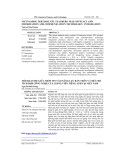






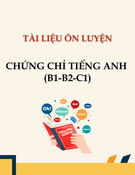

![Tài liệu luyện thi TOEIC cấp tốc trong 10 ngày [chuẩn nhất]](https://cdn.tailieu.vn/images/document/thumbnail/2025/20251029/kimphuong1001/135x160/99661761725822.jpg)
![Tài liệu Phá đảo TOEIC 900+ từ mất gốc trong 30 ngày [Mới nhất]](https://cdn.tailieu.vn/images/document/thumbnail/2025/20251029/kimphuong1001/135x160/2101761720956.jpg)
